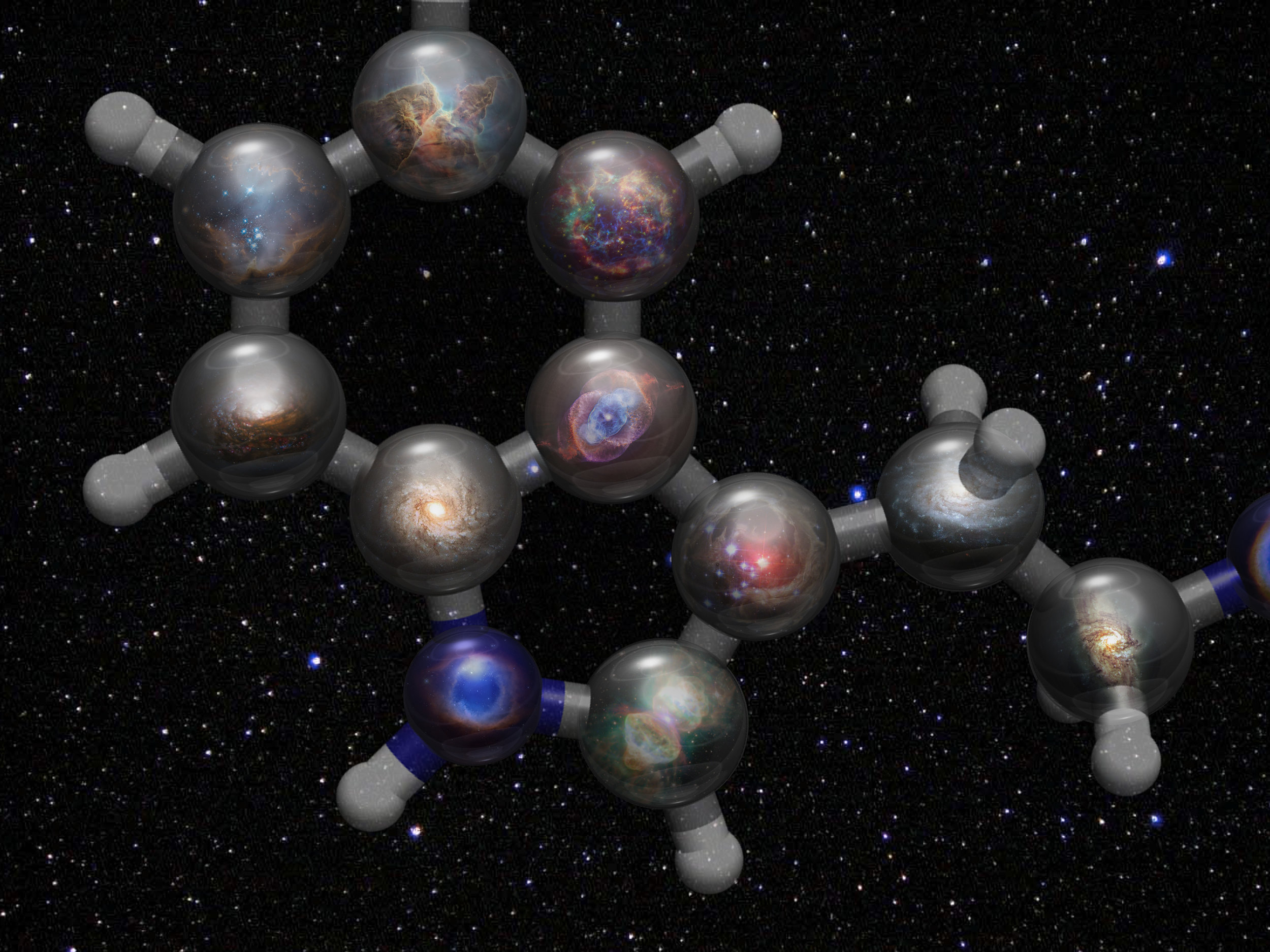
We are an interdisciplinary tribe of scientists and engineers who think big and build small.
Carson Bruns, Chief
Subhankar Mandal, Postdoctoral Research Associate
Aseem Visal, PhD Student
Meenakshi Skandarajan, PhD Student
Diane Jung, PhD Student
Colin Watkins, Discovery Learning Apprentice
Joshua Coffie, PhD Student
Roan Gerald, Undergraduate Researcher
The 10 Principles of Our Lab
Ideas are alive. They cannot be owned. Ideas gift themselves to us, not the other way around. You are probably not the first person to be visited by any idea. Technologies can be patented, yes, but a technology is not an idea; it is a created artifact inspired by an idea. Ideas are meant to be shared.
Personal responsibility. You are responsible for your own education & training. Find mentors to help you, but you have to do it yourself.
Spirit of collaboration. We are here to help each other and give ourselves to a research team. Embody a spirit of giving and helping.
Inclusion. All* are welcome to participate in our research. We try not to say no to people who want to join and help. (*pending appropriate alignment of goals & interests, training, and bandwidth in the lab).
Communication is key. Speak your mind. Don’t keep what you are thinking to yourself.
Take risks. Make mistakes. Change your mind. This is the true essence and spirit of science.
Self care is important. Do it; care for yourself. You can’t be a good researcher if you are not healthy in body, mind, heart, and spirit.
Read the literature. A day in the library is worth 100 days in the lab. Spend lots of time getting to know what your peers in the field have done.
Tell the truth. Always. Act with integrity. Be honest.
Fun. Team is how we win, and fun is how we team. Enjoy. Play. Delight. Research is a privilege. Don’t take it for granted.
Research
Emergent
Nanomaterials
The arising of novel structures, patterns, and properties during the process of self-organization in complex systems
Materials made with building blocks having at least one dimension on the nanoscale (1-100 nm)

Smart Tattoos
We are re-thinking the tattoo pigment as a way to permanently embed technologies in the skin. We are formulating tattoo inks that conduct electricity and change color in response to different stimuli. We hope to use these "tech tattoos" to power biomedical devices and wearable technologies, monitor and diagnose health issues, and augment human sensing and self-expression.
Read the articles in The Conversation or the TEDxMileHigh blog. See our work featured on NPR Marketplace, Denver ABC News and CBS News, Colorado Pubic Radio, KUNC, Denver Post, Newsy, Daily Mail, Inked Magazine, and CU Boulder Today. Listen to Carson on The Disruptors podcast. Watch the Bufftalk or the TEDx talk on TED.com:
Sustainable Materials
We thread molecular beads onto molecular strings to create novel and unusual nanomaterials, with an eye toward sustainability. The sliding of the nano-beads along the polymer nano-strings offers a novel mechanism for (i) energy dissipation, leading to materials that are remarkably soft, yet tough, and (ii) actuation, since we can control the sliding motions of the beads. We anticipate these slide-ring materials may help solve the plastics crisis by enabling us to create eco-friendly, recyclable materials that compete with conventional petroleum-based plastics in having robust and tunable properties and high strength.
Read Carson’s book on The Nature of the Mechanical Bond.
Self-Assembly + Machines
We build machines at nano-, micro-, and macro- length scales. The machines are typically built by, or for, self-assembly phenomena.
Publications

RECENT HIGHLIGHTS
JL Butterfield, JR Quigley, CJ Bruns.* Smart Tattoos from Intradermally Implantable Photochromic Nanosensors for Personal Ultraviolet Sensing and Dosimetry. Adv. Funct. Mater. 2024, 2405831. doi.org/10.1002/adfm.202405831
KV Dikshit, AM Visal, F Janssen, A Larsen, CJ Bruns*. Pressure-Sensitive Supramolecular Adhesives Based on Lipoic Acid and Bio-Friendly Dynamic Cyclodextrin and Polyrotaxane Cross-Linkers. ACS Appl. Mater. Interf. 2023, In Press. doi.org/10.1021/acsami.3c00927
CJ Bruns.* Moving Forward in the Semantic Soup of Artificial Molecular Machine Taxonomy. Nature Nanotechnol. 2022, 17, 1231–1234.
H Kwon, B Newell, CJ Bruns*. Redox-Switchable Host-Guest Complexes of Metallocenes and [8]Cycloparaphenylene. Nanoscale 2022, 14, 14276–14285.
KV Dikshit, CJ Bruns*. Chemorheological Monitoring of Cross-Linking in Slide-Ring Gels Derived from a-Cyclodextrin Polyrotaxanes. Front. Chem. 2022, 10:923775.
JL Butterfield, GP Penoncello, KV Dikshit, CJ Bruns*. A Photochromic Intradermal Smart Tattoo Based on Diarylethene-Doped Polystyrene Nanoparticles for Personal γ-Ray Dosimetry. ACS Applied Nano Materials 2022, 5, 13840–13844.
H Kwon, CJ Bruns*. All-Conjugated Cycloparaphenylene-Polycyclic Aromatic Hydrocarbon Host-Guest Complexes Stabilized by CH–π Interactions. Nano Research 2022, 15, 5545–5555.
K. V. Dikshit, C. J. Bruns*. Post-Synthesis Modification of Slide-Ring Gels for Thermal and Mechanical Reconfiguration. Soft Matter 2021, 17, 5248–5257.
Books
REVIEWS
"This book will serve very well to inform any chemist or chemistry student curious as to the workings of molecular topology and the molecular machines that depend upon it, and should be read by anyone seeking to enter these fields. The writing is elegant and at times playful-thoroughly enjoyable to read. This book will certainly occupy pride of place in my research group' library." Jonathan Nitschke
“… a spectacular book! Many chemists will want to have it on their desks and regard it as the holy writ.” Josef Michl
“The story is told by THE inventor-pioneer-master in the field and is accompanied by amazing illustrations… [it] will become an absolute reference and a best seller in chemistry!” Alberto Credi
“… the great opus on the mechanical bond. A most impressive undertaking!” Jean-Marie Lehn
“I love the first chapter, and its romp through the mechanical bond.” Roald Hoffman
“… what a wonderful read… I thoroughly enjoyed the scientifically atypical perspective. A real pleasure.” Bruce Gibb
“… comprehensive coverage [and] exceptional top-quality graphics… this [is a] definitive book.” Paul Beer
"The Nature of the Mechanical Bond will open new horizons for generations of readers and will stimulate the creativity of many architects of matter who wish to design more and more fascinating molecular systems." Claude Millot
In molecules, the mechanical bond is not shared between atoms—it is a bond that arises when molecular entities become entangled in space. Just as supermolecules are held together by supramolecular interactions, mechanomolecules, such as catenanes and rotaxanes, are maintained by mechanical bonds. This emergent bond endows mechanomolecules with a whole suite of novel properties relating to both form and function. They hold unlimited promise for countless applications, ranging from their presence in molecular devices and electronics to their involvement in remarkably advanced functional materials. The Nature of the Mechanical Bond is a comprehensive review of much of the contemporary literature on the mechanical bond, accessible to newcomers and veterans alike. Topics covered include:
– Supramolecular, covalent, and statistical approaches to the formation of entanglements that underpin mechanical bonds in molecules and macromolecules
– Kinetically and thermodynamically controlled strategies for synthesizing mechanomolecules
– Chemical topology, molecular architectures, polymers, crystals, and materials with mechanical bonds
– The stereochemistry of the mechanical bond (mechanostereochemistry), including the novel types of dynamic and static isomerism and chirality that emerge in mechanomolecules
– Artificial molecular switches and machines based on the large-amplitude translational and rotational motions expressed by suitably designed catenanes and rotaxanes.
This contemporary and highly interdisciplinary field is summarized in a visually appealing, image-driven format, with more than 800 illustrations covering both fundamental and applied research. The Nature of the Mechanical Bond is a must-read for everyone, from students to experienced researchers, with an interest in chemistry’s latest and most non-canonical bond.




















